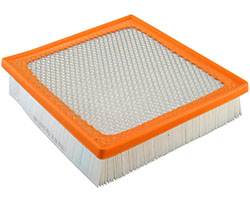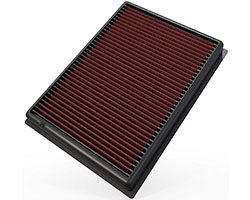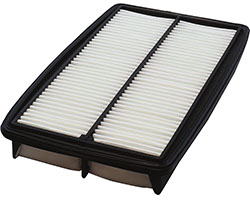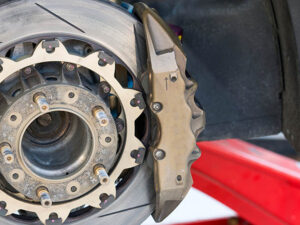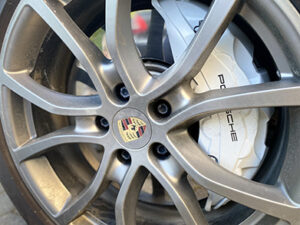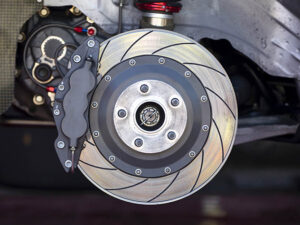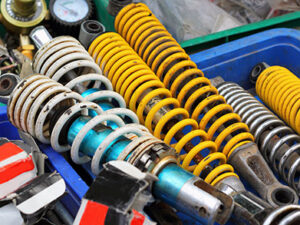Home \ Shop \ Engine & Efficiency \ Engine Air Filters
The Best Engine Air Filters: All You Need To Know in 2025
Replacement of the Air Filter has a major importance for keeping car's engine healthy and effective
Like an oil filter, it’s imperative to have an efficient air filter to ensure that your engine is supplied with clean air. A healthy engine is paramount to solid vehicle performance, and having a solid air filter is an important aspect. Among other things, clean air is vital for efficient fuel combustion.
Choosing the right air filter isn’t that easy, though; it’s not uncommon to get lost in the variety and various options available on the market. To help with that, we’ve chosen three of the best choices to explore in detail, and to give you a better idea of the engine air filter that could be right for you.

PROS
- No power loss during 12000-mile
- Quality and pure filter construction
- Fairly affordable
- Tested under ISO 5011 standart
CONS
- No significant downsides
Our top pick is the FRAM CA10755, a great option that will keep your engine running smoothly for long periods of time. With advanced filter media, this model ensures that your engine doesn’t deteriorate or suffer setbacks in performance.
Engineered to Perform: No Engine Power Loss throughout 12,000 miles
It’s clear that FRAM put some thought into their air filter’s design, as their results are quite impressive. This model is said to provide double the engine protection of an average air filter, keeping your acceleration and horsepower at peak levels. According to buyers, it is very good value for money due to the fairly generous 12,000 mile change interval. For its longevity and efficiency, it’s certainly a great investment.
Installation is fairly easy too, with clear instructions outlined with the product for anyone who is unsure about the procedure. Some buyers even describe the fit being better than their factory air filters. The fact that it is so easy to install even saved some less savvy drivers money on dealerships and mechanics. Oftentimes, even replacement factory filters cost more than the CA10755, and that’s not to mention the guaranteed performance and engine maintenance. All in all, this is a solid choice all-round due to its great fit, tested effectiveness, and affordable price tag.
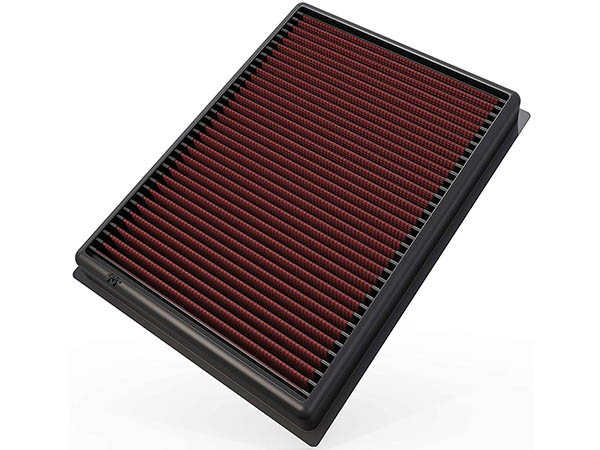
PROS
- 50,000 miles before first washing
- 1 Million miles limited guarantee (up to $250 overall saving)
- Support peak performance
- Made from eco-friendly materials
- Prepared for easy and proper installation
CONS
- No significant downsides
The K&N model on our list comes as a premium long-term choice. If you have some cash to spare, this air filter will pay for itself over years of service. K&N are so certain of this that they even offer a 10-year or million-mile limited warranty.
Quality and Longevity: Premium filter, that don’t need replacement and provides peak engine performance
On Amazon alone, 90% of buyers rated this engine air filter as a 5-star product. That’s fairly impressive when you take into account the price and promises of this filter. While this is the premium option, it could easily work out to be a money-saver if it maintains peak capability over several years. The fact that it is washable is a fairly novel and welcome fact in a world of disposable paper-based filters. Moreover, the filtration media is said to provide 50% more airflow than an average paper filter media, providing an edge in acceleration and horsepower.
Clogs aren’t as much of a problem with this filter either, as if there’s any level of flow obstruction, you can simply wash it at any time. With a paper filter, on the other hand, a severe clog could be a call for replacement. If that wasn’t enough, K&N guarantees 50,000 miles of performance before a first wash, over 4 times the 12,000 tested by FRAM’s filter. Finally, for those that are concerned about waste, this model is the epitome of eco-friendly air filters.
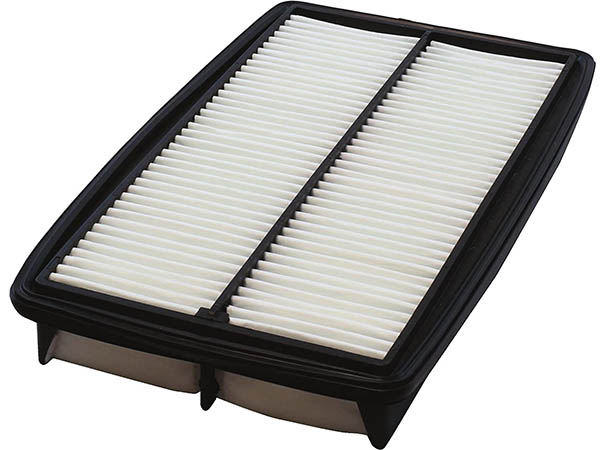
PROS
- Solid 12,000-mile change interval
- Significant protection against dirt
- Very affordable
CONS
- Thinness compared to OEM filter
If you have a Honda Oddysey (2005-10), Honda Pilot (2009-15), or an Acura MDX (2007-09), there’s a great budget option for you in the EPAuto GP013. It is very affordable and effective, offering some solid protection.
Enough engine safety throughout 12000 miles interval
While the downside of this product is that its applicable cars list is fairly limited, that conversely speaks to the attention to detail EPAuto has for tailoring this to Hondas and Acuras. A staggering 87% of buyers felt this was a top-of-the-line choice for their vehicle. Like our overall best choice, the FRAM, this engine air filter is recommended to be replaced every 12,000 miles.
Several buyers noted its quality being on par with a factory air filter, which is impressive for such a low price point. Unfortunately, some buyers noted that it didn’t fit their car quite as perfectly as it did for others, with the few complaints mostly criticizing the thickness or length of this model. Despite this, the filter still seemed to seal just fine for a lot of these buyers. To prevent something like this happening to you, double check your air filter’s dimensions and compare that with this product. In short, this air filter does a great job protecting and optimizing your engine, and if your car falls into their list, you might want to consider this budget-friendly option.
The 3 Types of Engine Air Filters
The three most common materials used in engine air filters are paper, foam, and gauze. Let’s take a look at how they compare in quality and performance.
Paper-based air filters
They are the most commonly used type in the automobile industry. Unsurprisingly, a big benefit of using and/or manufacturing paper filters is the cost-effectiveness of the material. However, there are a couple of drawbacks that should be noted by drivers. Firstly, paper filters are more prone to getting clogged or jammed by excessive particles, so in areas with heavy pollution, you might find yourself changing a paper air filter regularly. They are best used with smaller cars, as the filters have less reason to deteriorate. In either case, paper filters need more regular replacement than other types.
Washable filters
On the other hand, there’s the washable engine air filters like the K&N model we reviewed. There are two sides to the gauze filter spectrum: oiled gauze and dry synthetic. They need to be oiled regularly, and are the most popular option for washable filters. It’s typically recommended to perform maintenance (i.e. cleaning and re-oiling) on gauze filters every 5,000 miles or so. Different types could have different recommended maintenance intervals, though, like the K&N’s suggested 50,000 miles.
Foam filters
Finally, there’s protective foam filters, which are often used as an attachment to conventional filters (such as paper). By layering foam over the filter itself, it adds another obstacle between any particles and the engine. Thus, it adds a new layer of protection over your existing media; you probably won’t find exclusively foam filters in any cars.
Engine Air Filter Buying Guide and Tips
Buying engine air filters is easier said than done, as you have to sift through the many options before you can make a decision. There are a few key points to remember to find exactly what you need for your vehicle.
The first thing to consider is, of course, the fit. You could begin your search by researching air filters made specifically for your car model, as you might find that these offer near-factory fit and performance. Otherwise, check carefully that your vehicle is covered by any more-or-less universal air filters you peruse.
Another consideration is your driving habits and level of dirt and pollution in your area. If you live in a fairly clean environment and drive a small car, you likely won’t need to splash on the toughest filter on the market. Either way, the car you drive, how often you drive it, and the amount of debris you encounter have a significant effect on the lifespan and effectiveness of your air filter.
Finally, it’s on to picking the type of filter you’d like. If you’re looking for the simplest route of easy maintenance and affordable payments, a regular non-reusable filter could do the job. The FRAM CA10755, for example, is an efficient choice and doesn’t break the bank. If a washable, reusable filter sounds more enticing to you, making the investment into a long-serving item like the K&N filter above could be up your alley. Whatever your preferences, make it a point to consider quality over affordability, as your engine’s health and power is vital.
Engine Air Filter Maintenance

How often should you change/clean an air filter?
The frequency of filter changes and maintenance is mostly dependent on the filter itself. Some models, like the FRAM and EPAuto we reviewed, recommend replacement every 12,000 miles. However, this is essentially a rough estimate, as different conditions and driving patterns could affect a filter’s lifetime. Generally speaking, for non-reusable filters, you should first consider their recommended interval. Then, make some mental notes for yourself. How often you drive on unpaved roads, whether you have a turbocharged engine, and the level of pollution in your area are things to consider that could knock down your replacement interval.
As for cleaning intervals, you could make that as short as you like. Perform routine checks on your air filter if you’re concerned about its efficiency, and wash them accordingly. The washable filter we looked at (the K&N) offers up to 50,000 miles of use before an initial cleaning, so there’s often a pretty large window of time to make that decision. In short, make sure your washable air filter is still up to speed in terms of debris and oil with regular checks.
As a rule of thumb, try to keep your disposable air filter change intervals to under a year or 12,000 miles (whichever you get to first).
How do I change my old car air filter?
Changing your air filter is quite easy, and can be done in under five minutes. Once you have your replacement air filter, head over to your car and pop the hood. You should see a black box near (or on) your engine. You can typically identify it by a thick hose running from it.
Open the filter box by unclasping the clips holding the top sealed down. Check the filter quality; if it’s heavily clogged, it’s time for a replacement. Gently take it out of the box and put your new filter in its place. Make sure it fits the same way your old filter did, and that it’s secure in its place. After that, simply close the box and your hood again and you’re all done.
Of course, taking your washable air filter out to clean follows the same procedure, except for the part where you replace it.
What happens if you don’t change your air filters?
Keeping dirty and past-it filters in your car can have a number of adverse effects. Quality filters help your engine in several ways, including maintaining power and cleanliness. Thus, if your air filter is in need of a replacement and you don’t do so, you might be looking at some setbacks in engine performance.
Because your engine needs a steady supply of air for fuel combustion, a clogged filter could mess with your car’s fuel efficiency. This could lead to you using more fuel than necessary for the same output. Similarly, your acceleration and overall power can be affected. If your engine is repeatedly getting granules of debris due to poor air filtration, its lifespan could take a hit. A healthy, clean engine could get permanent setbacks if the quality of your air filters isn’t up to par.
Finally, not having a clean and steady supply of air could affect your emissions as well. The inefficiency caused by lackluster filtration could lead to you emitting more harmful gases than necessary. In short, having an efficient and clean air filter will help maintain your car’s overall efficiency, and maintaining it won’t break the bank.
- Automotive air filter guide – Napa Know How Blog
We do an efforts to find, research and recommend the best products. So, we may receive commissions from purchases that you make after following the links in our product reviews.


